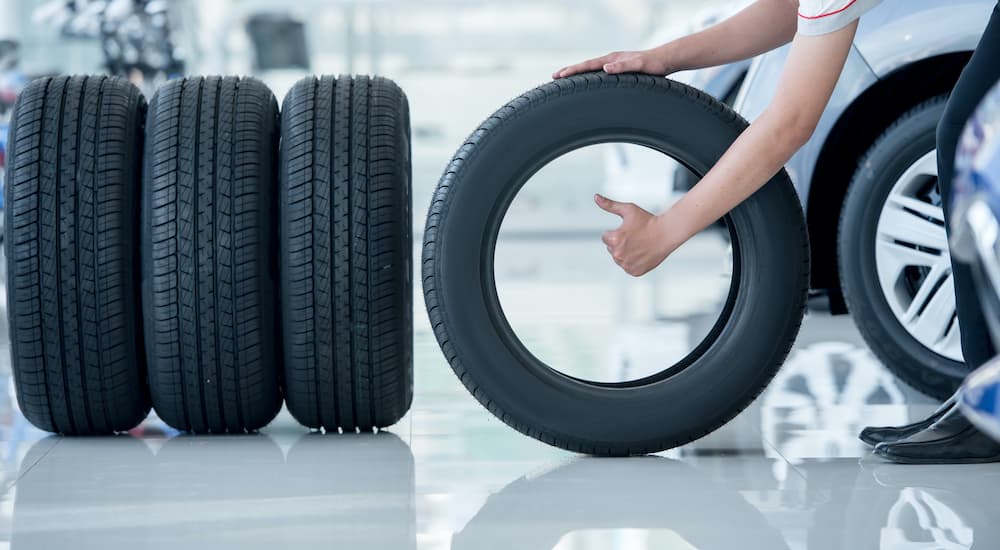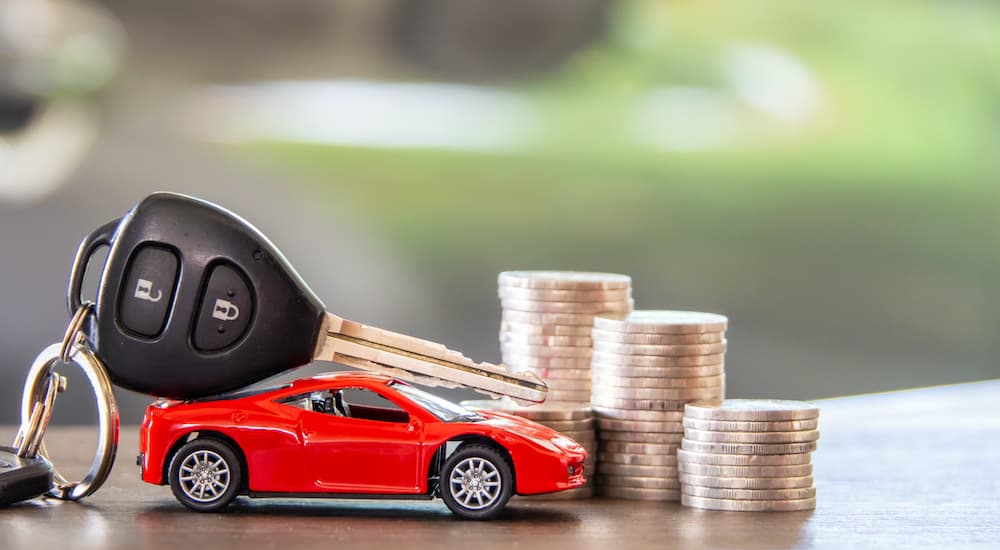While it might not be as exciting as playing the stock market or as lucrative as real estate, your vehicle can be a real investment in its own right. A well-kept, reliable, or rare vehicle can be worth its weight in gold for those willing to put the work in. This is especially true as of late with supply chain issues and record-high new vehicle prices driving more and more buyers to the used market. In fact, if you value your car now, its worth might look very different than it did a couple of years ago or in a couple of years.
Of course, like any investment, it has to be protected, but that can be tough when it comes to something that you’re still using as a daily driver. While no one is recommending that you squirrel your vehicle away under a drop cloth or behind some velvet ropes until it comes time to sell, there are some simple steps you can take to ensure that when that day comes, you’ll get the best possible return on your vehicular investment. Curious about how to increase the value of a car? Read on for a few simple tips for maximizing your vehicle’s resale value, and you’ll be laughing all the way to the bank.
#1: Improve Curb Appeal…
First impressions are everything, and this is particularly true when it comes to making a sale. With potential buyers likely choosing between several options, the smallest imperfection can make all the difference and cause even the most promising sale to fall through. There are several things a seller can do to improve their vehicle’s curb appeal, including thorough cleaning inside and out, repairing small dents and dings, and even detailing. While it might be tempting to put it off until you’re ready to put the vehicle on the market, the truth is these types of routine maintenance and repair tasks should be a priority from day one.
A savvy buyer will likely notice the difference between a vehicle that’s been lovingly maintained over the course of its life versus one that is receiving its first coat of wax the day before it appears on Craigslist, so try to make a habit of it. This is particularly true of small dents and dings, which can balloon into larger, rust-laden issues if left unchecked. Ditto to bird droppings which, aside from being unsightly, are also highly acidic, can quickly eat through paint, and provide an excellent argument for keeping your vehicle stored inside whenever possible.
#2: …Within Reason
Of course, it’s important not to go overboard when it comes to dressing your vehicle up for the resale market. While a small investment in, say, a car wash or wax job could go a long way in improving buyer confidence, more expensive repairs might necessitate a little cost-benefit analysis. For example, an untreated ding is going to hurt you when it comes to curb appeal, but investing up to $1,000 to repair a vehicle that’s only going to be listed for $5,000 is a great way to rob yourself of potential profit. So make sure to use websites like Kelley Blue Book to assess your vehicle’s trade-in value before breaking the bank on any big-ticket repairs.
This holds less true as you move into the upper end of the used vehicle market, where such repairs are almost required in order to make a sale, so make a frank assessment of your vehicle’s value before investing in any major repairs. A professional detailing job would be a waste of $200 when it comes time to sell your rusty 2003 Camry, but if you’ve got a classic Camaro up for sale, that glistening chrome could be a make-or-break factor.

#3: Focus on Lights and Tires
There are a couple of vehicle components that can have an outsized effect when it comes to making a sale, specifically headlights, tires, and wheels. While these typically don’t have a dramatic effect on a vehicle’s performance, their effect on curb appeal cannot be underestimated, so take special care when it comes to prepping to sell. Wheels should get a thorough scrub and wax, restoring them to their showroom glory. Of course, that might make your tires look a little worn out by comparison, so give them a little TLC as well, scrubbing the sidewalls, cleaning out the treads, removing any conspicuous dirt and grime, and applying a tire shine compound.
If you’ve been keeping up with your tire maintenance and getting regular tire rotations, balances, and alignment, your tires should be wearing out at a relatively consistent rate. If not, consider replacing worn-out tires, but again, make sure to take the cost-benefit analysis into consideration. The best approach is to replace all four tires whenever an issue develops, which ensures that you’ll be rolling with a matching, evenly worn set when the vehicle goes on the market.
When it comes to headlights, any burned-out bulbs should obviously be replaced (it’s generally a good idea to make sure the vehicle is road legal before sale), but beyond that, a little elbow grease can go a long way. Restoring headlights often has less to do with replacing a bulb than it does with cleaning the lens cover assembly. This can be done using any number of headlight cleaning compounds, but in a pinch, regular old toothpaste will also do the trick. This method won’t repair any cracks or scratches but will work wonders in removing years of grime from fogged-up lights.
#4: Keep Records
When it comes to making a case for your vehicle’s resale value, a solid log of service and maintenance records are beneficial to have. A buyer can only tell so much about a vehicle’s condition by kicking the tires or taking a test drive, but that’s where these records come in. These include everything from documentation of major repairs to oil changes and receipts for batteries, tires, windshield wipers, and even fluid replacements. Guidelines around when to perform such maintenance tasks are outlined in the vehicle maintenance service schedule, which can be found in your owner’s manual, so there’s really no excuse for letting these chores fall by the wayside. These types of records not only provide a useful retrospective on the vehicle’s repair and maintenance history but also signal to a buyer that the vehicle was well-cared for in its time and that they’re dealing with a seller mindful enough to have kept such a log.
#5: Consider the Mileage
There’s a certain psychological aspect to any sale, whether it be your next vehicle, the latest fast-food creation, or those alluring endcap displays at the supermarket. Like it or not, people are relatively easy to influence, but this can work to your advantage when it comes time to sell your vehicle. There are countless examples of this, but one of the most interesting has to do with a vehicle’s mileage.
Logically, our brains know that there’s little difference between a vehicle with 97,000 miles on the odometer and one that’s passed the 100,000-mile mark, but those 3,000 miles can make all the difference from a psychological perspective. It doesn’t make a lot of sense given the fact that a vehicle that was driven hard and poorly maintained over the course of 97,000 miles will likely be in much worse shape than a well-maintained vehicle with higher mileage, but it’s simply human nature. If you know that you’ll be putting your vehicle up for sale in the near future, try to stay just shy of these mileage milestones and don’t give buyers any reason to lowball you. However, if your car is above these milestones, those maintenance records from before can come in handy for showing someone your vehicle is still good.
#6: Give Them the Fax
Services like CARFAX, Experian, and AutoCheck serve a similar role to your vehicle’s service and maintenance records, giving buyers a closer look into the vehicle’s history that can go a long way in helping you to close the sale. These types of independent, third-party history reports detail a vehicle’s history throughout its life, including incidents that occurred before you owned the vehicle that you might not be aware of. These reports usually include information on a vehicle’s title, mileage, how many people have owned the car, and accident history.
In some cases, the reports will give you specific information on an accident, detailing not only when and where the incident occurred but also the severity of the damage sustained. If you’re looking to save a little money, you can always pass the cost on to the buyer and make them pay for the report themselves, but at an average of $35, it’s a relatively cheap way to increase buyer confidence and could even turn up some useful information that will help you to more accurately price the vehicle.
#7: Timing Is Key
Timing is everything, especially when it comes to selling your vehicle for maximum profit. There are several factors to take into consideration, including the time of year, gas prices, and current inventory in both the new and used vehicle markets, so doing a little market research can be very helpful when it comes to getting maximum value. While certain vehicles like pickup trucks tend to retain their value regardless of market fluctuations, other vehicle types can be a little more hit or miss, so read up on some of the current trends and see where your vehicle fits in.
Search used vehicle websites, dealerships, and online classifieds for vehicles similar to your own, note what other sellers have the vehicle listed for and price yours accordingly. Doing so will not only ensure you get a good value for your vehicle but will also help expedite the sale, putting cash in your pocket without a bunch of back-and-forth negotiations. When it comes to selling your vehicle to a dealership, timing is just as important as their current inventory and customer demands can affect their offer.
Invest In Your Car Now So You Can Get More for It Later
A well-maintained vehicle has long been a good investment, and that holds especially true today. The current lack of new vehicle inventory makes it a seller’s market, but that doesn’t mean that turning a profit is as easy as snapping a few photos, putting up an ad, and collecting the cash. Ensuring you get the maximum return on this investment starts from the first day of ownership, and it’s something that can easily be made up for down the line with a coat of wax and a new air freshener.
Sticking to your vehicle’s recommended service schedule is one of the easiest ways to ensure it retains its value, but it’s far from the only method available. Regular cleaning and market research are two other important factors, as are the psychological slights-of-hand that work off a buyer’s unconscious bias. We’re not advocating anything dishonest when it comes to selling your vehicle (far from it, actually), but knowing how a potential buyer might view your car can go a long way in getting the maximum return on your investment.





